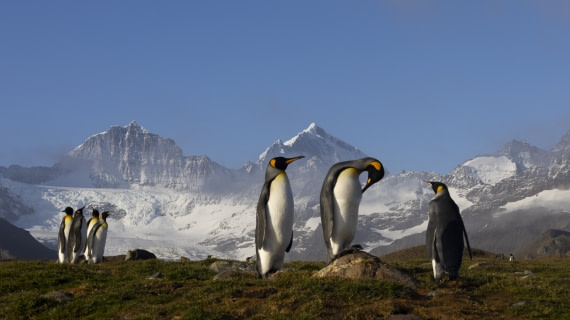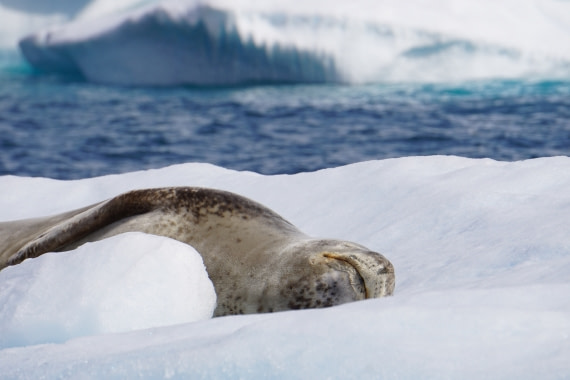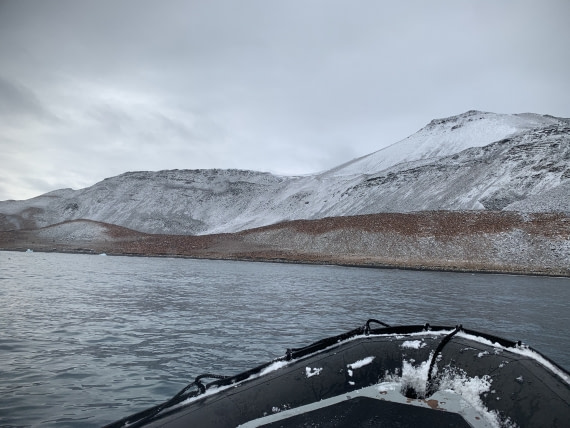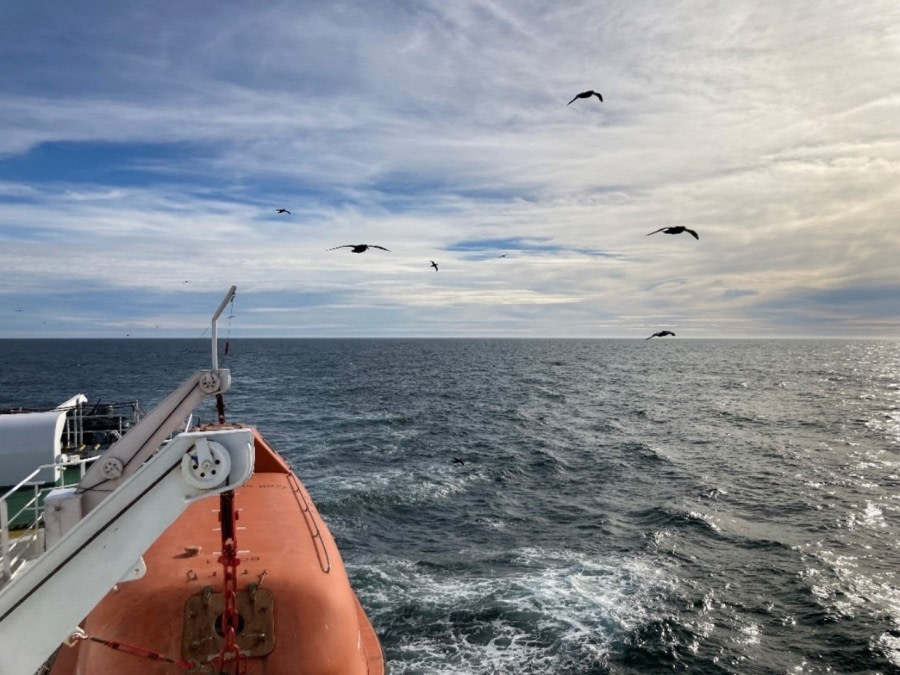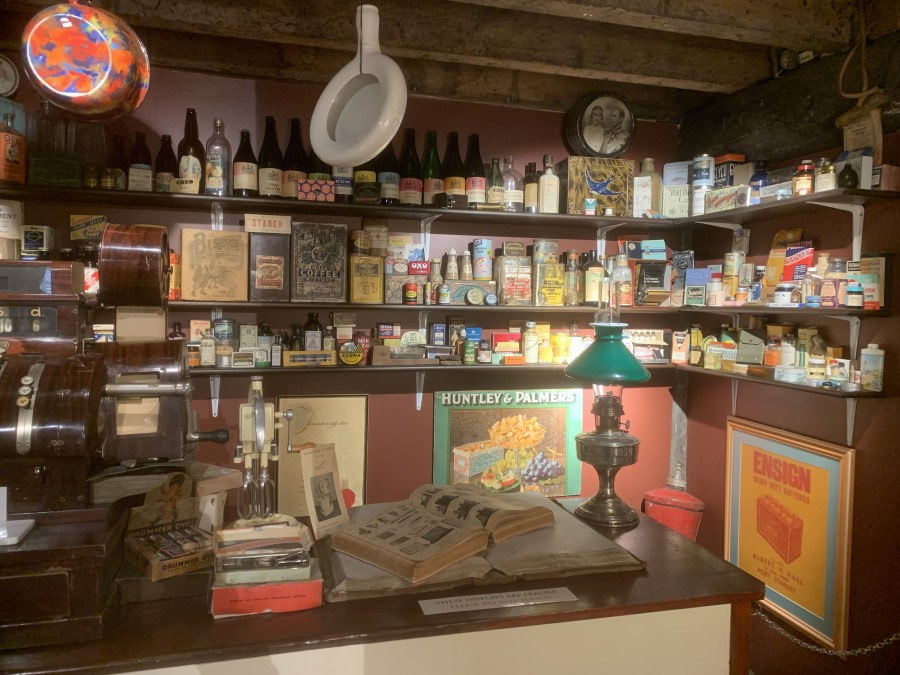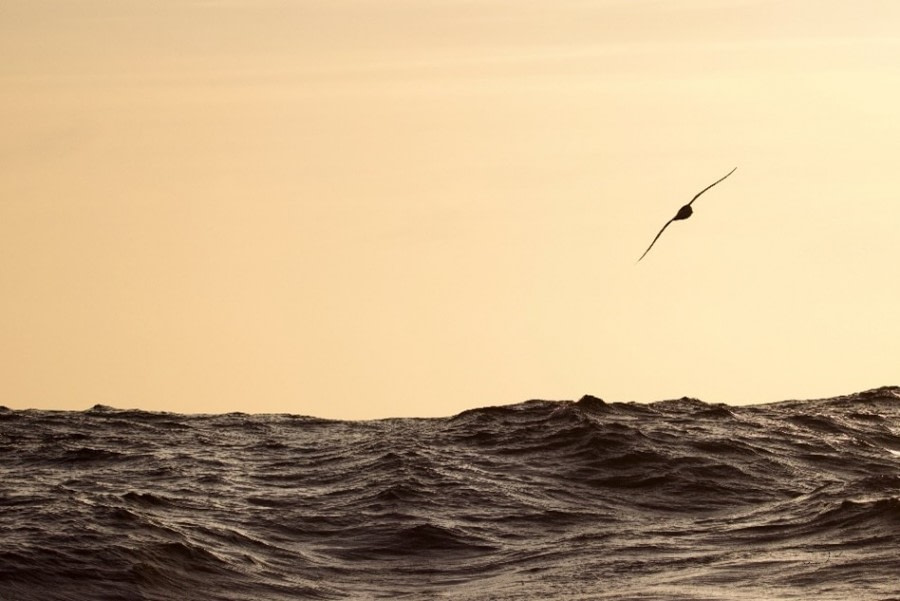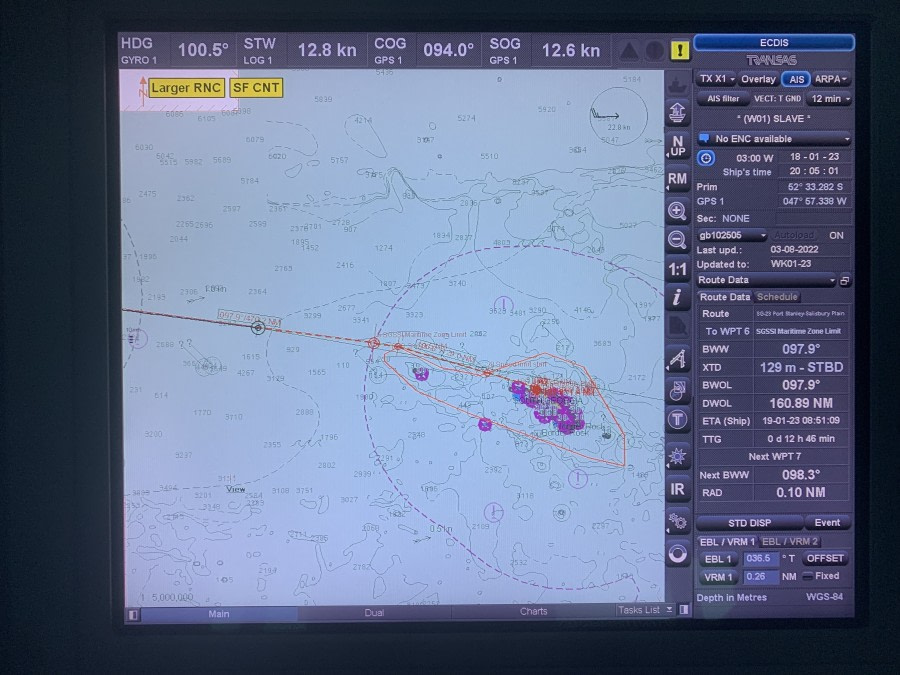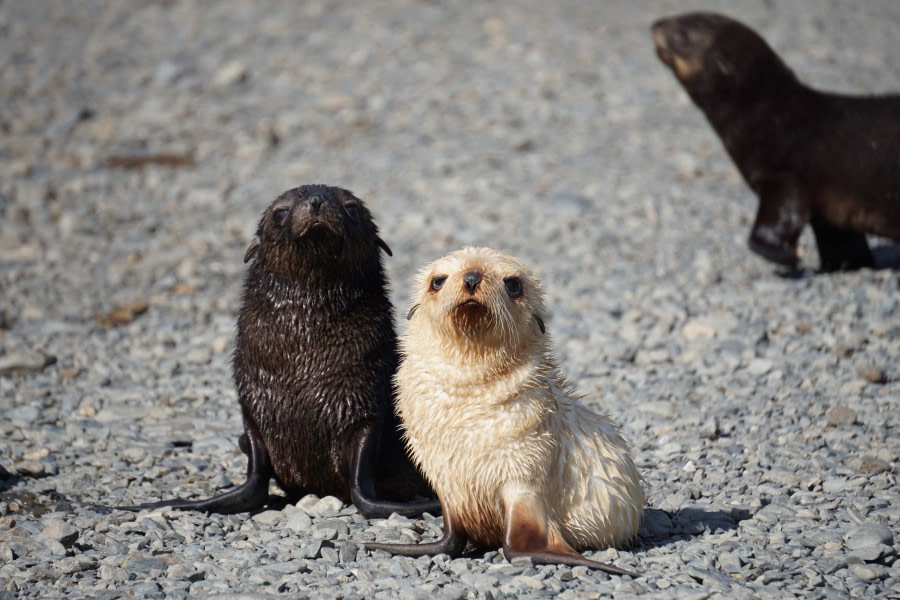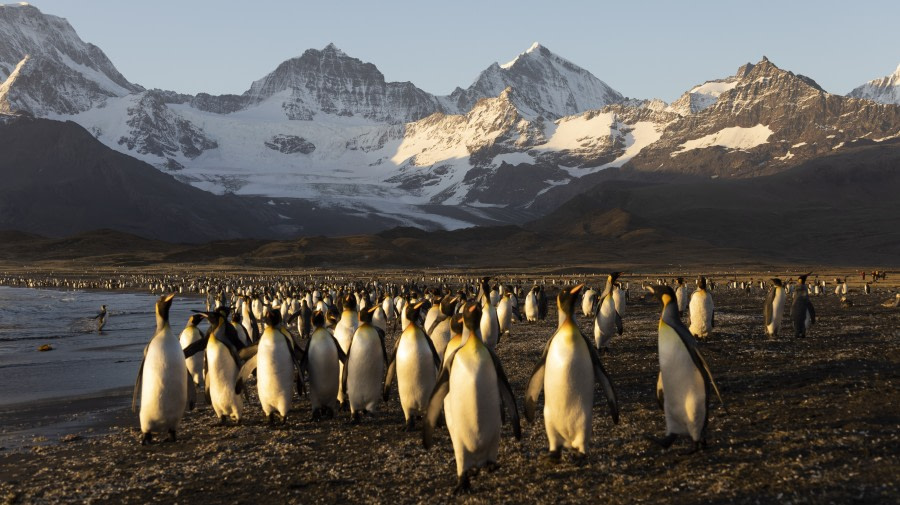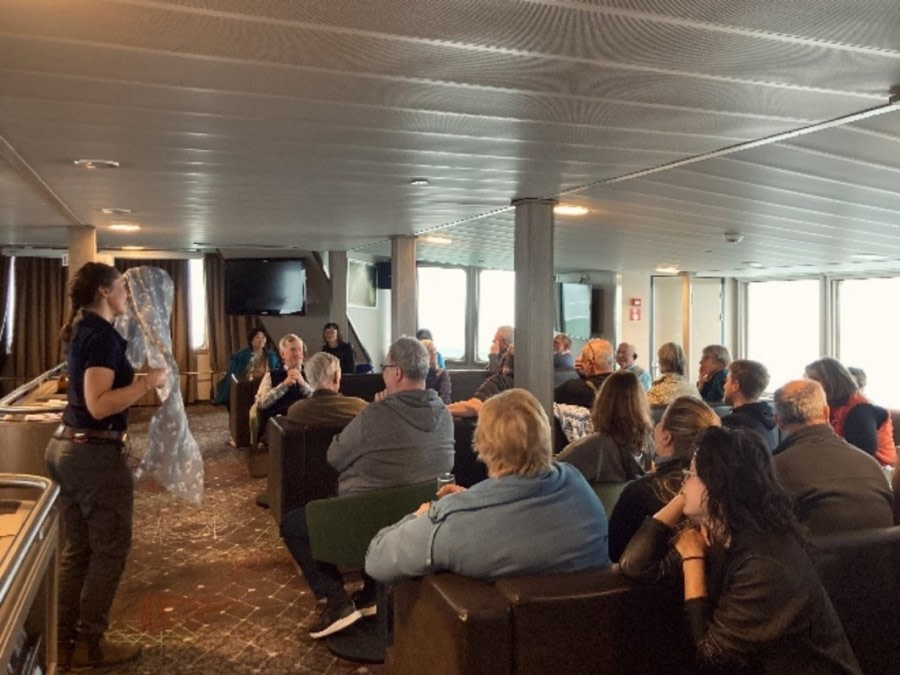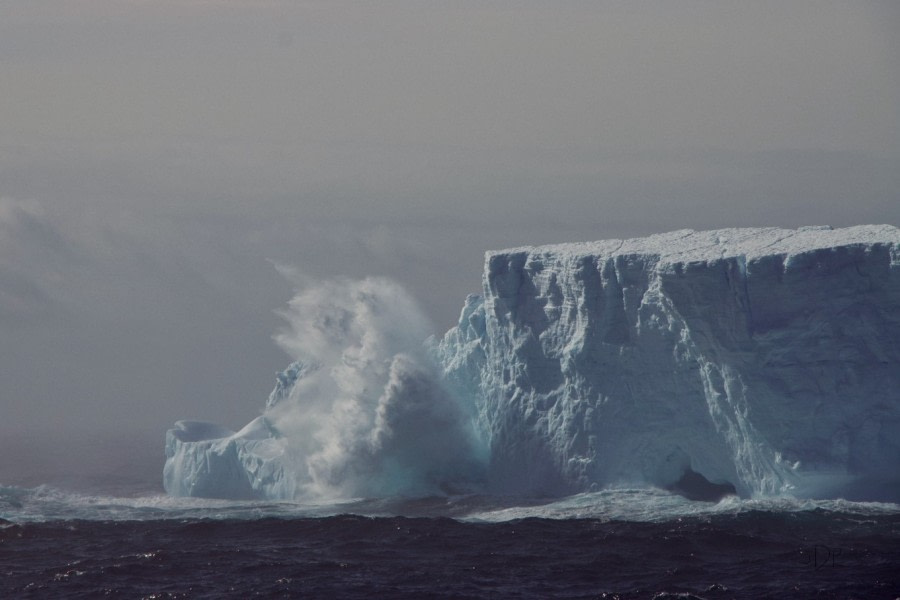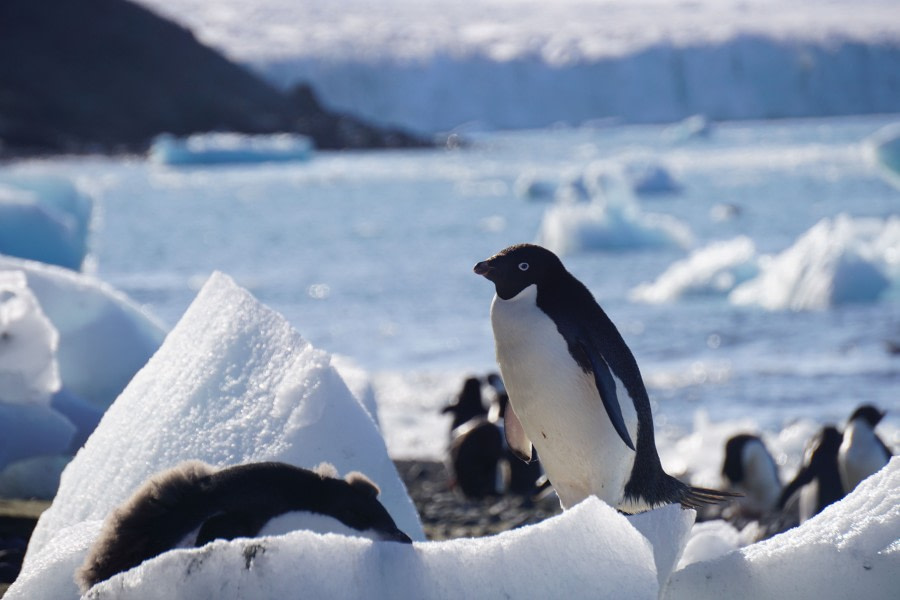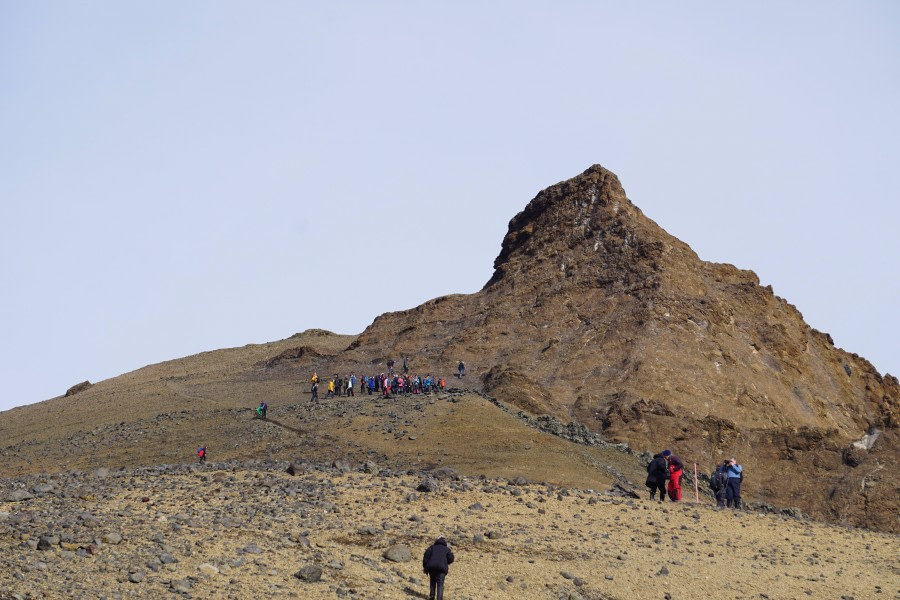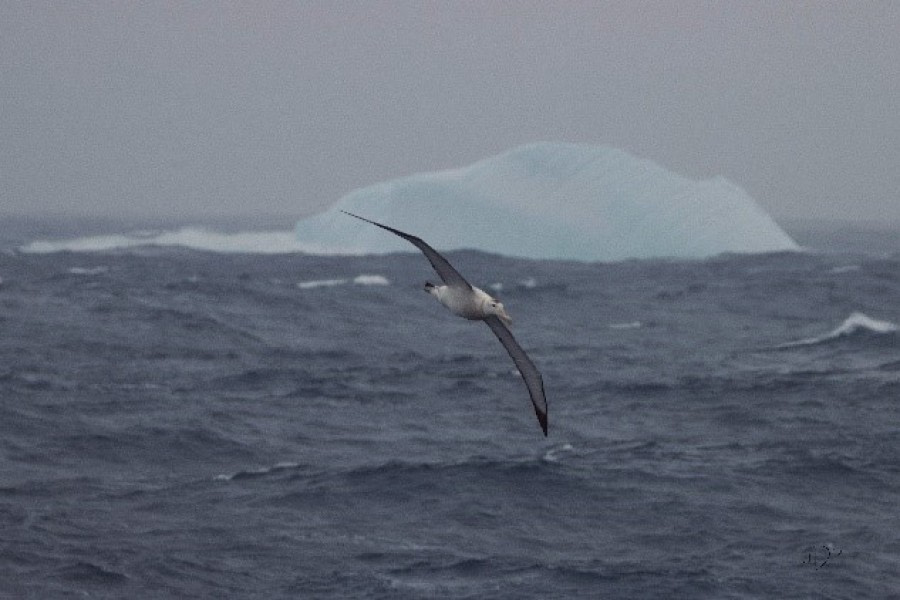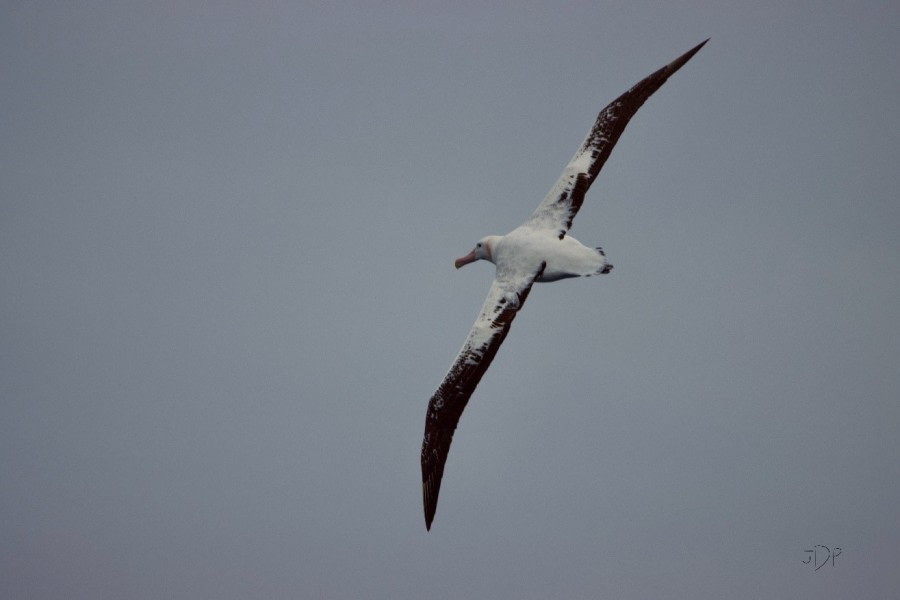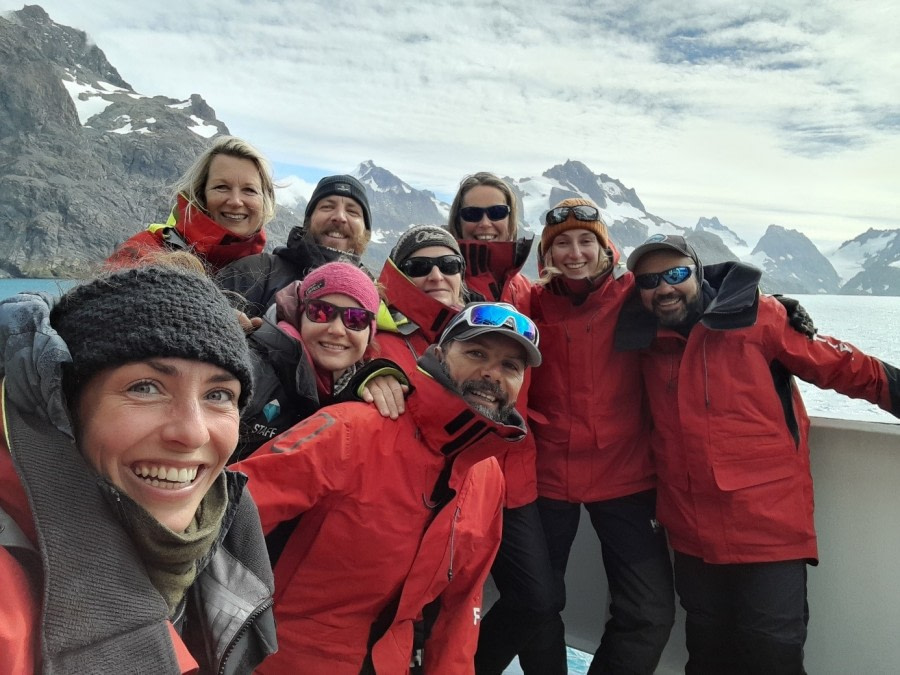| Date: |
18.01.2023 |
| Position: |
52°19.4’S / 050°38.2’W |
| Wind: |
WNW5 |
| Weather: |
overcast |
| Air Temperature: |
+14 |
We spend our fifth day on board crossing an area of the South Atlantic which lies along the north border of the Scotia Sea a region of the world known for its treacherous waters. This was our first full day at sea after visiting the Falkland Islands, and the second day in our crossing from the Falklands to South Georgia.
We left the continental waters shortly after leaving Port Stanley the day before and we entered true oceanic waters where the depths can reach up to 4 km. This allowed us to witness real pelagic life forms around the ship such as many Wandering Albatross, Black Browed Albatross, and several other types of birds, mostly Prions and other types of Albatrosses. This made our navigation very pleasant and given the calm conditions of the ocean, we enjoyed a joyous morning with a sunny deck and blue skies.
As the day started breakfast was served on board. By this day, most of us had already developed our “sea legs” and most of us attended the call.
For this day, our expedition staff prepared a set of informative lectures about various topics describing the environment where we are. The first of the lectures for the morning was a presentation about penguins, offered by our biologist Steffi. This lecture was offered to all the German speaking guests we have on board. In this presentation she described the various types of penguins as well as their habitats and strategies to survive the intense cold of the Antarctic and sub-Antarctic waters.
Shortly after, during the second half of the morning, we had our second lecture, presented by veterinarian and biologist Pierre. His presentation, made under the title “Humpback Whales”. This was a superb introduction to all the non-experts about the life and habits of these beautiful cetaceans that populate the oceans of the world. In his presentation, Pierre paid special attention to describe all the aspects of the life cycle of whales, their migrations, their feeding habits and the dangers that can threat them. He showed us various videos and sounds bringing very of his vivid experiences with humpback whales.
Lunch was served on board at 12:30 and by this time of the day we were very happy to see more guests joining the restaurant even though we had no longer calm waters. Since the early morning we encountered heavy swell and consequently the ship rolled every now and then.
For today we planned to launch an Argo floating probe at 14:00. Hence, we were invited to witness how this device was deployed into the open ocean. The Argo is an international collaboration program that uses profiling floats to observe various parameters of the oceans such as temperature, salinity, currents, and bio-optical properties (for more information visit http://www.argo.net). Once the floats are deployed on the surface of the water, the floats “sink” to a parking depth of 1000 m. After 10 days they go deeper to a new parking depth of 2000 m where they stay for another 10 days. After this, the floats come to the surface, deliver their data to research centres, and begin a new cycle of 20 days.
The launching was a success, and we were all very curious to know and learn more about the program and the findings of this program.
Once the Argo float was launched, we continued with our program of presentations for the afternoon. At 15:00 our expedition guide Josh offered an interesting review about the first explorers who reached the South Pole, the Norwegian team led by Roald Amundsen and later, the British team led by Robert Falcon Scott. During his exposition, Josh mentioned some of the facts of this so-called “race to the pole” and how it ended tragically for Scott’s party. This presentation brought some of the highlights of the “heroic” era of Antarctic exploration.
After this nice presentation, we then had the second presentation of the afternoon, this time given by Eduardo our assistant expedition leader. Under the title, “The exploration of the bottom of the oceans” Eduardo took us on a journey of discovery covering three main topics. In the first part, he described the sea features we encounter below the waves at the bottom of the oceans. Then in the second part, he spoke about the history of the exploration of the bottom of the oceans touching major expeditions such as the one of the HMS Challenger and the most modern ones made using deep-sea vehicles. Finally, he presented some of the major discoveries that all these activities have brought to the scientific community and how these discoveries have helped to understand the past and future geology of planet Earth. Additionally, he spoke about the significance of the life forms discovered deep below the waves, making emphasis on the hydrothermal vents.
During the early evening we had our daily recap, with Ali presenting the weather and the plans for the next day. Additionally, Eduardo gave a recap about the Argo floats, Annelou gave a recap about the history of the Aurora Islands, a group of islands sought by early navigators in the South Atlantic but that were never to be seen again. The last recap was presented by Elodie who spoke about the cloud formations we witness over the mountains of South Georgia. Shortly after this activity, dinner was served in the restaurant. During the night, we continued our sailing towards South Georgia under a dark starless night.

